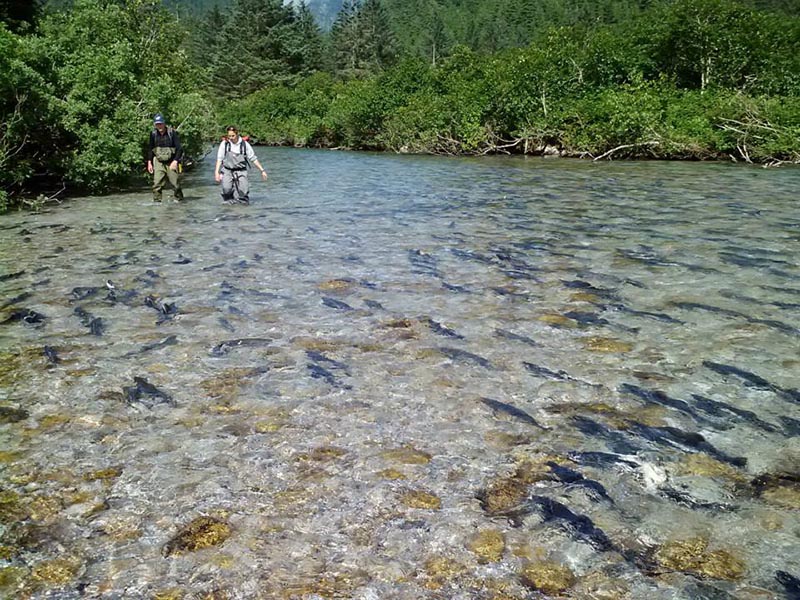Marketing momentum builds every spring in anticipation of the Alaska salmon season, and Copper River salmon benefits from that early position. As one of two regional seafood development associations in Alaska, the Copper River Prince William Sound Marketing Association not only works to strengthen brand equity for Copper River salmon but also looks for strategic partnerships within the industry.
Among those is a working relationship with the Alaska Department of Fish and Game and the Prince William Sound Science Center. Over the past two seasons, the marketing association contracted the science center to conduct a sonar feasibility study followed by the Lower Copper River Sonar Project (a secondary sonar based salmon counting station).
ADF&G operates a sonar-based counting station located between Childs Glacier and Miles Lake at a point where the Copper River is confined to a single channel approximately 35 miles from the ocean. Two sonar units are operated at the site, one on each side of the river. The site is staffed from mid-May to the end of July, with around-the-clock salmon passage monitoring. For the 2016 season, the Lower Copper River Sonar was deployed at a site near the Clear Martin and Copper rivers, only 10 miles from the ocean.
During May 2016 a single didson (dual-frequency imaging sonar), the same type ADF&G uses at Miles Lake, was deployed at the site. Hourly and daily counts were performed on location. The resulting counts were posted and made available to ADF&G managers, marketing association members — Area E salmon drift and set permit holders — and the general public via the Internet. Daily counts were posted on the marketing association and science center websites, and sonar imaging was posted to YouTube.
According to Prince William Sound Area Management Biologist Jeremy Botz, “Lower Copper River sonar counts were reviewed by ADF&G in-season, often within a day of the count. In future years, this lower Copper River sonar project may provide an earlier understanding of potential passage trends at the Miles Lake sonar site. The project has the potential to provide more information early in the fishery and increase the potential for a more rapid adaptation of management strategy.”
Better access to data supports the shared goal of sustainability. The work of branding and marketing requires a sustainably managed resource as well as a premium product.
“We’ve got the premium brand, Wild Alaskan Copper River Salmon. We’ve also got the sustainably managed resource. It is our job to protect and invest in this resource,” says Bill Lindow, Copper River Prince William Sound fisherman and marketing association board member. “Partnering with ADF&G and PWSSC was easy. The science center promoted the project, as they had board members and staff who understand the situation and had the technical ability to do it. ADF&G cooperated and supported the project, as they stood to benefit by having new, timely information on fish entry into the lower river.”
Copper River salmon is predominantly a premium fresh product, and as such, regular biweekly commercial fishing openers are significant to successful marketing. In-river salmon counts from the Lower Copper River Sonar Project may provide area fisheries managers reliable timely information to supplement their organizational resources. Over time the project may prevent extended closures that have interrupted market supply in the past.
“The early part of the Copper River run is immensely valuable to the local economy, and we strive to provide the fishery managers with an up-to-date picture of fish passage in the lower delta,” said Dr. Rob Campbell, the science center’s lead on the project. “The sonar videos of fish passing are put up in near real-time and count statistics are posted within a few hours — and all the data is freely available on the project webpage. The Copper River delta is a dynamic environment and an extremely challenging place to work. We have learned a lot in the last two years, and have continually tuned our methods to improve the quality of the data we are collecting and the speed at which we send it out.”
The Lower Copper River Sonar Project will continue into the 2017 salmon season with one significant change. Two sonar units will be deployed, one on each side of the channel, to further align with the ADF&G upriver enumeration program. The station will be staffed according to dates determined by the local ADF&G area management office (early May to the first week of June).







